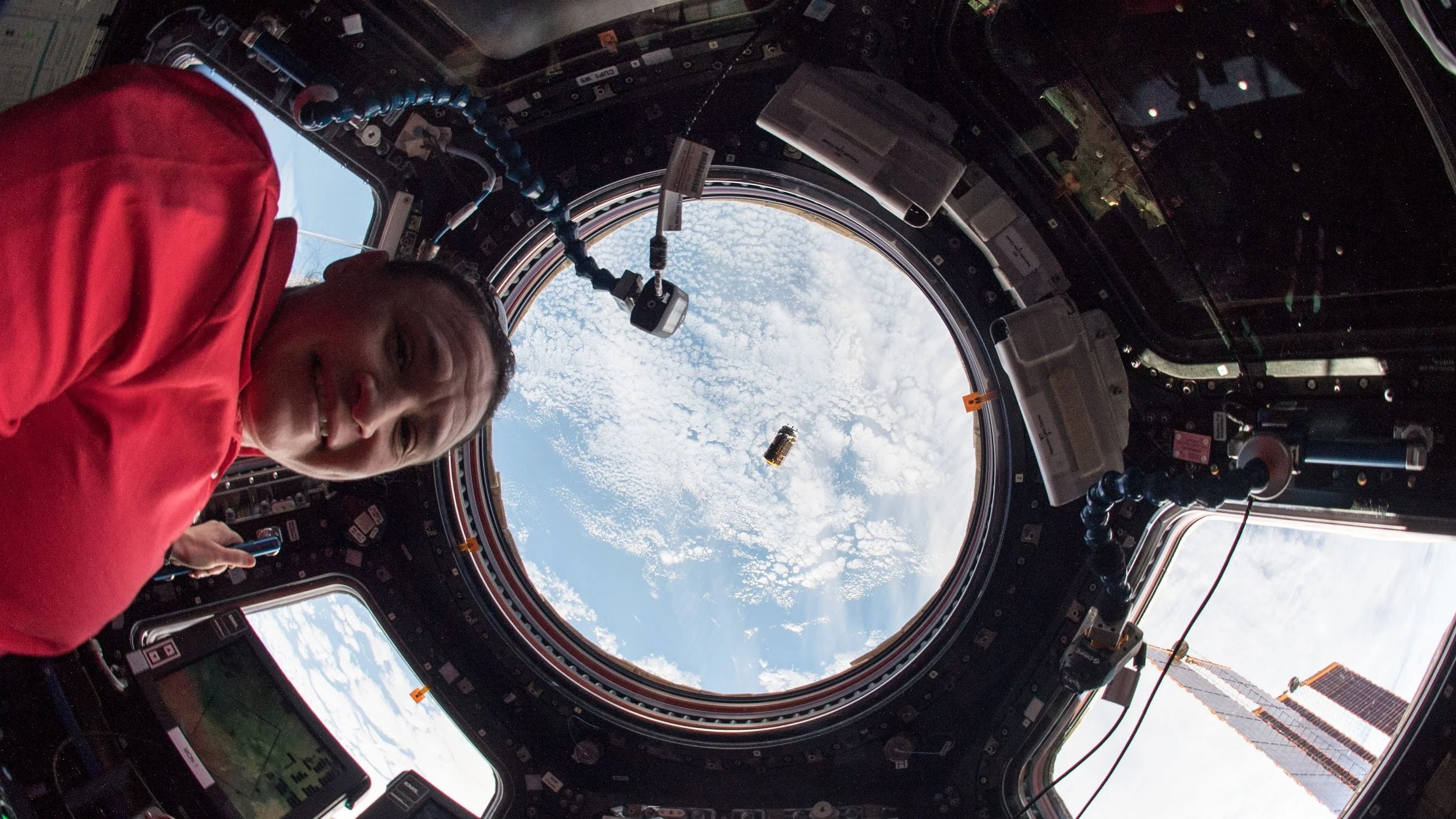Astronauts release Kounotori 7 from space station
/Following a six-week stay at the International Space Station, the Japan Aerospace Exploration Agency Kounotori 7 cargo ship was unberthed and commanded to depart the vicinity of the orbiting outpost.
Launched Sept. 22, 2018, atop an H-IIB rocket from the Tanegashima Space Center in southern Japan, Kounotori 7 spent several days catching up with the outpost before rendezvousing and berthing with the ISS on Sept. 27. It brought with it some 6,000 kilograms of equipment, supplies and experiments to the outpost, including new lithium-ion batteries.
After being unloaded of its cargo and reloaded with un-needed equipment, European Space Agency astronaut and Expedition 57 Commander Alexander Gerst commanded the 17.6-meter Canadarm2 robotic arm to release the cargo craft at 16:51 UTC Nov. 7. His back-up support was NASA astronaut Serena Aunon-Chancellor.
According to NASA, at the time of release, the space station was flying about 409 kilometers over the northern Pacific Ocean.
"The Expedition 57 crew would like to thank the entire JAXA program and engineering teams for the flawless design and execution of the HTV-7 resupply mission," Gerst said following the departure. "The contribution of such a well-designed cargo vehicle is an important part of the International Space Station partnership, enabling humanity to successfully operate its currently only one laboratory and outpost in space. HTV-7 supplied the ISS with a new generation of important payloads, such as NASA's Life Sciences Glovebox, ESA's new Life Support Rack and the JAXA small return capsule, testing out and demonstrating the new technology of returning critical scientific cargo from the ISS directly into the laboratories of Japanese scientists. We congratulate all participating engineers on the successful design and assembly of the small return capsule and we wish all the best for the upcoming and most interesting phase of the return capsule mission: the re-entry and descent."
Absent from the cargo craft was the Exposed Pallet that brought up the lithium-ion batteries. Because of the Oct. 11, 2018, Soyuz MS-10 abort, two members of Expedition 57—NASA astronaut Nick Hague and Russian cosmonaut Aleksey Ovchinin—were not able to make it into orbit. They landed safely in Kazakhstan about 20 minutes after launch. As such, two spacewalks that were planned for late October were not performed as Hague was supposed to be one of the two to perform it.
Under the new plan, the batteries will remain at the ISS in the Exposed Pallet attached to the Mobile Base System on the outpost’s truss. They are now expected to be installed in early-to-mid-December after three additional crew members launch to the complex aboard Soyuz MS-11. That flight is currently scheduled for Dec. 3, 2018, and will consist of Russian cosmonaut Oleg Kononenko, Canadian astronaut David Saint-Jacques and NASA astronaut Anne McClain.
Once the trio are safely aboard the ISS with Gerst, Aunon-Chancellor and Russian cosmonaut Sergey Prokopyev, up to three spacewalks are expected to be performed—two by Gerst and Saint-Jacques to install the batteries, and a third by Kononenko and Prokopyev on the Russian side of the outpost.
In the meantime, Kounotori 7 is scheduled to continue to move away from the space station before performing a deorbit burn at about 21:30 UTC Nov. 10. While the cargo craft itself is designed to burn up safely over the ocean, a small test reentry capsule was installed on the hatch of the ship and will be deployed before entering the atmosphere.
According to NASA, the conically-shaped HTV Small Re-entry Capsule measures 0.6 meters high and 0.8 meters wide and is designed to demonstrate re-entry technology and cargo recovery functions from the ISS. Currently, the only vehicles that can return any cargo from the space station are the crewed Russian Soyuz spacecraft (which offers minimal down-mass capability) and SpaceX’s cargo Dragon spacecraft (which offers a large amount of down-mass capability).
After re-entry, the capsule is expected to parachute down off the coast of Japan where a JAXA ship will be waiting to recover it from the water, NASA said.




